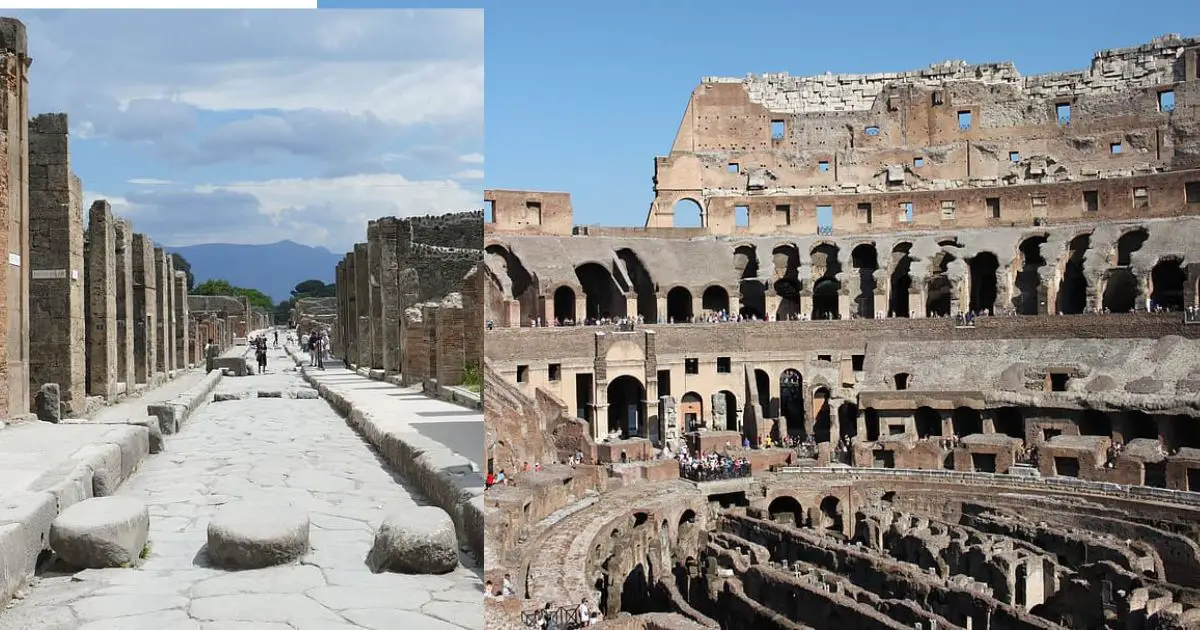Italy, a country steeped in history and culture, offers a plethora of fascinating Historical Sites in Italy waiting to be explored. From ancient ruins to Renaissance masterpieces, each location tells a story of Italy’s illustrious past, captivating visitors with its beauty and significance.
Historical Sites in Italy
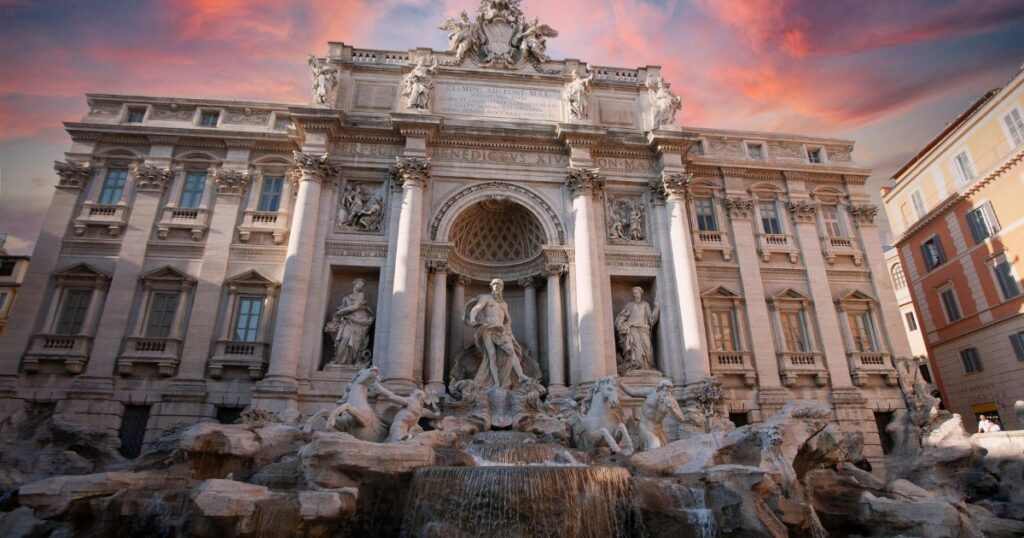
1. The Colosseum: Symbol of Ancient Rome
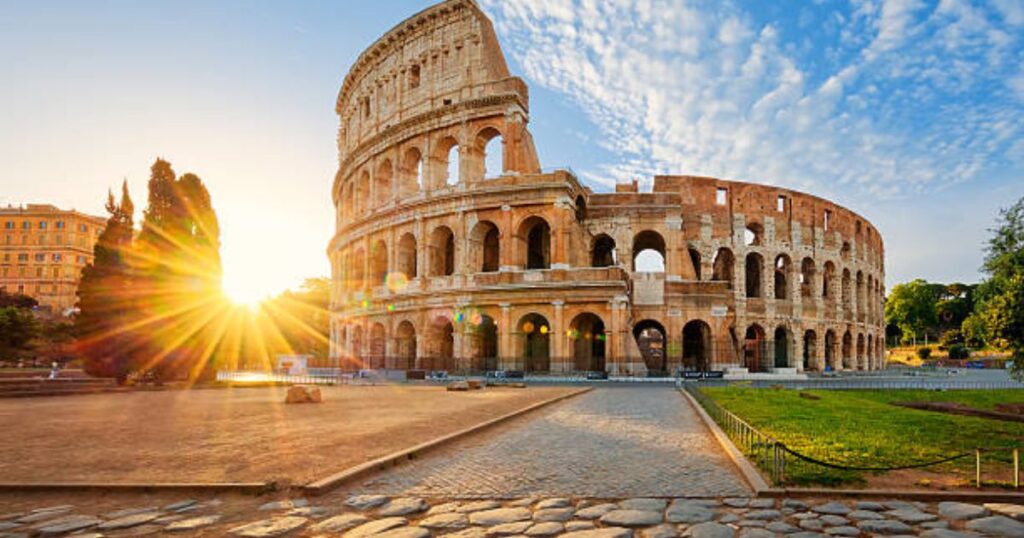
The Colosseum, also known as the Flavian Amphitheater, stands as a testament to the grandeur of ancient Rome. Built in the 1st century AD, this iconic structure was used for gladiator contests, animal hunts, and theatrical performances.
Today, it remains one of Rome’s most visited landmarks, attracting millions of tourists each year. Stepping inside the Colosseum is like stepping back in time, offering a glimpse into the spectacles and events that once took place within its walls.
2. Pompeii: Frozen in Time
Buried under layers of volcanic ash and pumice following the catastrophic eruption of Mount Vesuvius in 79 AD, Pompeii lay hidden for centuries until its rediscovery in the 18th century.
The remarkably preserved ruins provide a unique insight into daily life in ancient Rome, with its well-preserved streets, buildings, and artifacts.
Walking through the streets of Pompeii, visitors can imagine what life was like before the city was engulfed by ash, offering a fascinating glimpse into the past.
3. The Pantheon: Architectural Marvel
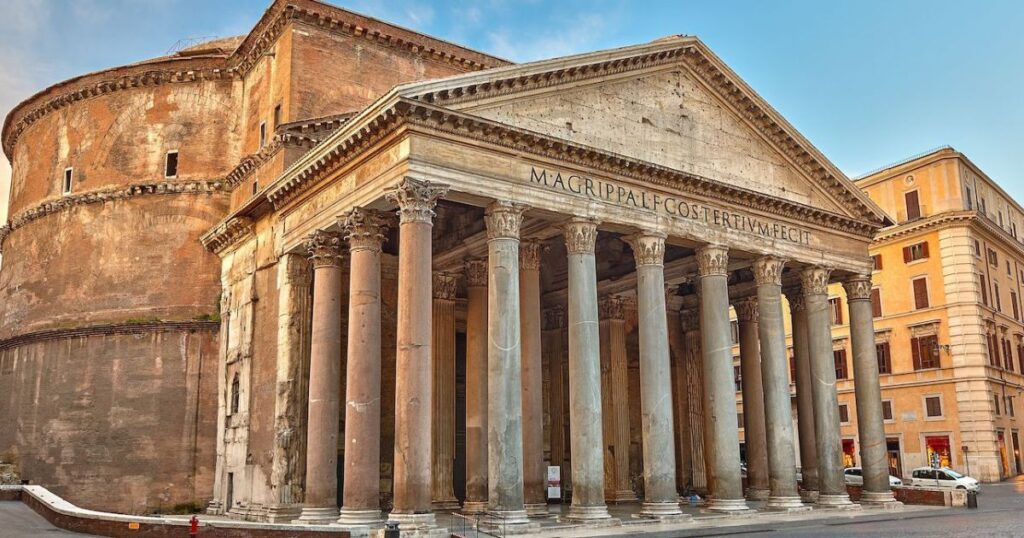
The Pantheon, a former Roman temple and now a church, is renowned for its magnificent dome and impressive architecture. Built in the 2nd century AD, it is one of the best-preserved ancient Roman buildings in the world.
The oculus, a circular opening at the top of the dome, allows sunlight to stream into the interior, creating a breathtaking spectacle. Visiting the Pantheon is a must for architecture enthusiasts and history buffs alike, offering a glimpse into the engineering prowess of the ancient Romans.
4. Vatican City: Spiritual Center
Vatican City, an independent city-state located within Rome, is the spiritual and administrative center of the Catholic Church. Home to St. Peter’s Basilica, the Vatican Museums, and the Sistine Chapel, it is a treasure trove of art, history, and religion.
Visitors can marvel at Michelangelo’s masterpiece, the ceiling of the Sistine Chapel, explore the vast collections of the Vatican Museums, and admire the grandeur of St. Peter’s Basilica.
Vatican City is a place of pilgrimage and inspiration, drawing visitors from around the world to experience its beauty and spirituality.
5. Florence’s Duomo: Renaissance Splendor
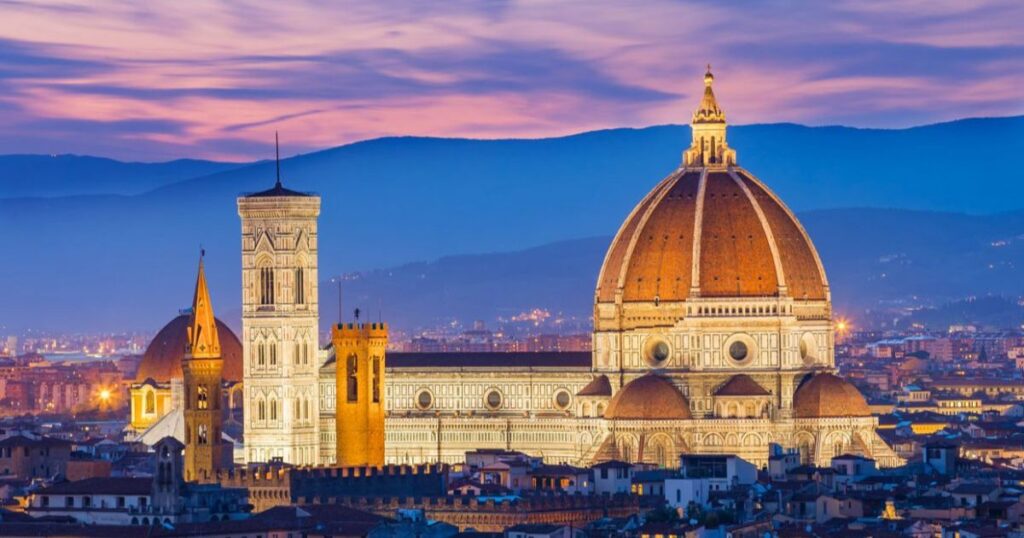
The Florence Cathedral, also known as the Duomo, is a stunning example of Renaissance architecture. Dominating the city’s skyline, its iconic dome is a masterpiece of engineering and design.
Visitors can climb to the top of the dome for panoramic views of Florence or explore the cathedral’s interior, adorned with stunning frescoes and marble decorations. The Duomo is a symbol of Florence’s artistic and cultural heritage, attracting visitors with its beauty and significance.
6. The Leaning Tower of Pisa: Italy’s Quirky Landmark
The Leaning Tower of Pisa is perhaps Italy’s most famous architectural oddity. Built as a bell tower for the nearby cathedral, its distinctive tilt is the result of unstable ground conditions.
Despite efforts to stabilize the tower, it continues to lean at a precarious angle, drawing visitors from around the world who come to marvel at its unique tilt and snap the perfect photo. Climbing to the top of the tower offers stunning views of Pisa and is a must-do experience for visitors to Italy.
7. St. Mark’s Basilica: Venetian Gem
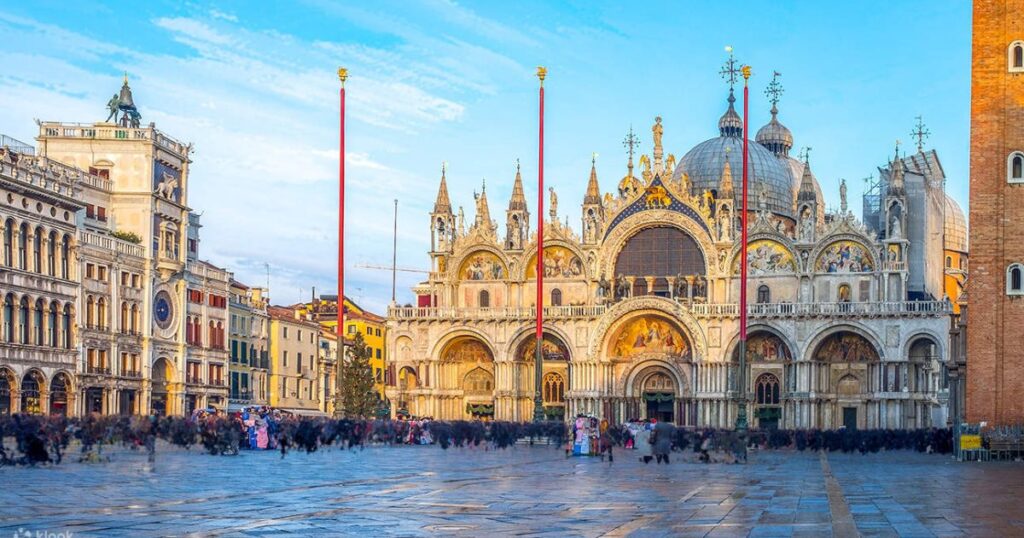
St. Mark’s Basilica, located in Venice’s iconic Piazza San Marco, is a masterpiece of Byzantine architecture. Adorned with golden mosaics, marble columns, and intricate carvings, it is a symbol of Venice’s wealth and power during the Middle Ages.
Visitors can explore the basilica’s interior, filled with stunning artworks and religious relics, or climb to the top of the bell tower for panoramic views of the city. St. Mark’s Basilica is a must-see attraction for anyone visiting Venice, offering a glimpse into the city’s rich history and cultural heritage.
8. The Roman Forum: Heart of Ancient Rome
The Roman Forum was the political, religious, and commercial center of ancient Rome, bustling with activity during the height of the Roman Empire.
Today, it is a sprawling archaeological site dotted with ruins of temples, basilicas, and government buildings. Visitors can wander through the ancient streets, marvel at the remains of once-grand structures, and imagine life in ancient Rome.
Guided tours offer insights into the history and significance of the Roman Forum, making it a must-visit destination for history enthusiasts and curious travelers alike.
9. The Uffizi Gallery: Art Lover’s Paradise
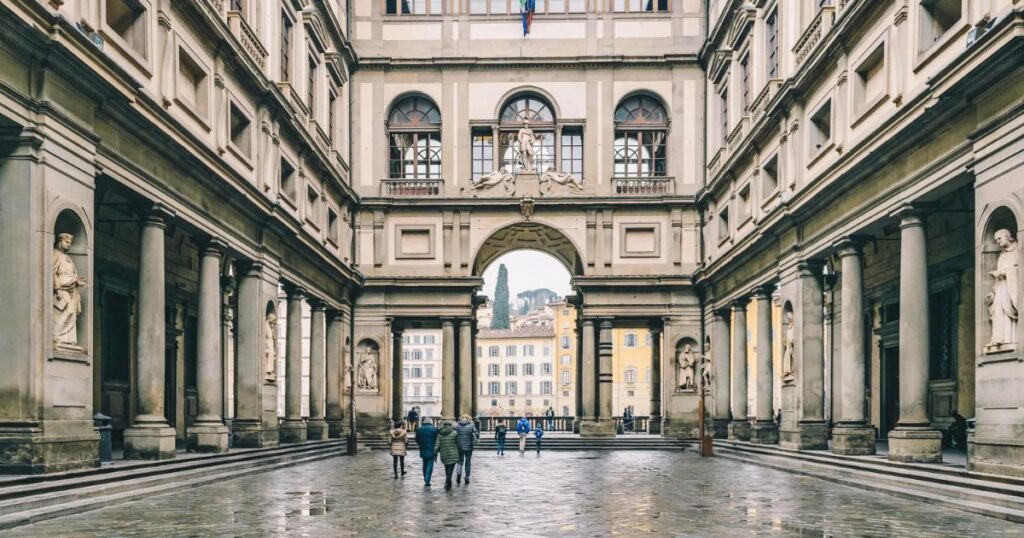
The Uffizi Gallery, located in Florence, is one of the world’s oldest and most renowned art museums. Housed in a historic Renaissance palace, it is home to a vast collection of masterpieces by artists such as Leonardo da Vinci, Michelangelo, and Botticelli.
Visitors can admire iconic works such as Botticelli’s “The Birth of Venus” and Michelangelo’s “Tondo Doni,” as well as lesser-known gems from the Renaissance period.
Navigating the gallery can be overwhelming due to its size and popularity, but with a bit of patience and planning, it offers an unparalleled opportunity to experience the richness and beauty of Italian art.
10. Herculaneum: Lesser-Known Gem
While Pompeii often steals the spotlight, the nearby ancient city of Herculaneum offers its own unique insights into Roman life.
Buried under layers of volcanic ash during the eruption of Mount Vesuvius in 79 AD, Herculaneum remained remarkably well-preserved, providing archaeologists with a rare glimpse into daily life in a Roman city.
Visitors can explore its well-preserved streets, houses, and public buildings, marveling at the intricate mosaics, frescoes, and artifacts that offer a window into the past. While not as large or famous as Pompeii, Herculaneum is a hidden gem waiting to be discovered by curious travelers.
11. Sforza Castle: Milan’s Renaissance Fortress
Sforza Castle, located in the heart of Milan, is a formidable fortress that has played a significant role in the city’s history for centuries. Originally built in the 15th century by the Duke of Milan, it served as a residence for the ruling Sforza family and later as a military barracks and prison.
Today, the castle houses several museums and art collections, including Michelangelo’s unfinished masterpiece, the “Rondanini Pietà.” Visitors can explore the castle’s courtyards, gardens, and museums, immersing themselves in Milan’s rich cultural heritage.
12. The Catacombs of Rome: Underground History

Beneath the bustling streets of Rome lie a network of ancient catacombs, burial chambers, and underground passageways dating back to the early Christian era.
These subterranean labyrinths served as burial grounds for early Christians and were also used as places of worship and refuge during times of persecution.
Visitors can explore the catacombs on guided tours, marveling at the intricate frescoes, inscriptions, and sculptures that adorn the walls. While exploring the catacombs can be eerie, it offers a fascinating glimpse into Rome’s early Christian history and the lives of its inhabitants.
13. Assisi: Spiritual Haven
Nestled in the hills of Umbria, the picturesque town of Assisi is renowned as the birthplace of St. Francis, the patron saint of Italy.
Visitors can explore the Basilica of St. Francis, a UNESCO World Heritage Site that houses the saint’s tomb and a collection of exquisite frescoes by Giotto and other Renaissance artists.
The town’s charming streets, medieval architecture, and peaceful atmosphere make it a haven for pilgrims and spiritual seekers alike, offering a serene retreat from the hustle and bustle of modern life.
Also Read:
- These areThe Top 7 Dog Friendly Beaches in Maryland
- These are The Top 10 Best Places To Visit California in January 2024
Conclusion
Italy’s historical sites offer a captivating journey through time, allowing visitors to immerse themselves in the rich tapestry of the country’s past. From ancient ruins to Renaissance masterpieces, each location tells a unique story of Italy’s cultural heritage and historical significance.
Whether you’re exploring the streets of Rome, marveling at the art of Florence, or soaking in the serenity of Assisi, Italy’s past is sure to leave a lasting impression on all who visit.
FAQs
1. Are these historical sites suitable for children?
While some sites may be more child-friendly than others, many offer educational opportunities for children to learn about history and culture.
2. Are guided tours available at these sites?
Yes, guided tours are available at most historical sites, offering insights and information from knowledgeable guides.
3. Are these sites wheelchair accessible?
Accessibility varies depending on the site, but many efforts have been made to accommodate visitors with mobility issues.
4. How much time should I allocate for visiting each site?
The amount of time needed varies depending on the site and your interests, but plan to spend at least a few hours exploring each location.
